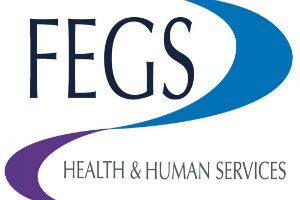The holiday season is a time of tradition — family gatherings, songs of the season and Jimmy Stewart wonderfully warbling “Zuzu’s petals! Zuzu’s petals!” That is, until Ted Turner went all willy nilly in his digital Bob Ross phase and added a little color to George Bailey in It’s a Wonderful Life. Objection spanned from the tip of Mount Krumpet to the Island of Misfit Toys. The classic black and white film was the preferred version for the masses.
With the advent of high definition television, portable color video game systems and the digital camera, it’s only natural to assume that people prefer color visuals. But with many successful direct mail packages the classic black and white look is continuing to win over prospects while keeping active donors on board.
In its non-premium mailings, which total nearly 50 percent of the nonprofit’s mail, Save The Children ( STC) mostly concentrates on the colors of its branded logo — black, white and red — explained Gail Arcamone, associate director of direct marketing. “We have tested color on our outer envelopes and in our photos and the results were not strong enough for us to continue,” Arcamone said. “We think it has a lot to do with our donors seeing too much color as being flashy and we don’t want to see a backlash. So we pretty much stick to black, white and red.”
Arcamone cited STC’s annual fund as one of its most successful campaigns. It generally tallies a 5 percent response and $57 average gift, all with a mainly black and white package. The Westport, Conn.-based organization has a donor file size of approximately 80,000-100,000 names.
STC is not completely averse to color. It conducts a color “holiday gift in your name” mailing in a small quantity. It’s sent out to a quarter of its file that has responded to the organization in the past. Previously, it only mailed roughly 10,000 of the color “holiday gift in your name” packages. This year STC is sending 25,000. STC traditionally sees a 3 percent response and an average gift of $110, Arcamone added.
Despite the colorful results, testing has proven that shades of gray work very well for STC. “We did a test with a color photo of a girl in a school setting and response and average gift did not see a lift,” Arcamone said. “The black and white just gives it a more photorealistic look. It’s also important for us to be cost effective and you save a little when you don’t go four-color.”
Photorealism may be in the eye of the photo holder. Lester Zaiontz, vice president of creative strategy and development at commercial printer Concord Litho, believes that color can establish a mood and convey emotion more so than black and white tones. That being said, Zaiontz added that organizations need to decide how they want their message packaged. The choice of colors is an offshoot of the branding process.
“Some organizations that have a more sterile look tend to perform better than those with a lot of slick color,” Zaiontz said. “We did some testing with the American Heart Association a while back. The carrier envelope, their control, was white with maybe one or two colors. It was very simple and clean and we tested it against a package that had full color on it. The more sterile package won. I think the donor base for American Heart expects that institutional look as opposed to a commercial feel. In cases like that, it makes sense to play (black and white) out.”
While there are scores of successful black and white packages making the mail rounds there has been an overall increase in the use of color, said George Kinney, vice president of marketing at Castle Press in Pasadena, Calif. The color boost is a result of the dipping cost of color printing, on a per unit basis, both in set-up costs and continuation of run costs.
“Ten years ago, if you wanted to do a color separation, you would often spend $125,” Kinney said. “Today a color separation, if you use a digital camera, is free. You have to spend some money — $15-$20 — on color correction to make sure the image looks good. But the separation is free and you’re just looking at some Photoshop time. In the early 1990s, 1,000 color ad pages were in the $200-range. Today 1,000 color ad pages is around $10.”
The influx of color has been the result of technological advances, not just in printing equipment but for the systems used to design direct mail. Now everyone has a color monitor on their desk, so that when they start creating packages, they create them in color. There’s also the option of digital printing, which allows people to create color pieces that have varying levels of personalization to them. Printers are no longer using film or doing color separations, according to Kinney. Everything is direct to plate, digital proofing or, in some cases, virtual proofing using pdf files.
Kinney seemingly has ties to the Ted Turner philosophy — if you have color and can afford it, use it.
“What amazes me is I hear people say that a piece looks too fancy,” Kinney said. “So, in order to not upset donors, they send out something that does not look as nice. But if you’re asking for $1,000 and you send out something that looks mimeographed or photocopied it takes away from your credibility.”
Colorblind squirrel finds a nut
A piece arrives in the mail with a white Plain Jane envelope devoid of graphics and a return address printed in blue. No bells, no whistles, no witty slogans. The letter comes from an organization noted for its testing and this is the package to which people have responded.
“Our gut feeling is to put the value in the premium and don’t waste it on the package,” explained Susan Loth, director of fundraising at Disabled American Veterans (DAV) in Cincinnati, Ohio. “I’ve heard from a number of people that ‘ugly works’ and it’s true. A lot of people might immediately think that you want some kind of image that’s flashy, that flashy means attention-grabbing. We’ve found that just keeping it simple and low key on the elements of the package that are not the premium works better for us.”
When DAV ships its return address label premium packages its letters might contain the organization’s branded colors, a little red, white and blue in the header with a letter and a photo that is generally duotone. DAV does not utilize a four-color process with its photos, Loth said.
But when it comes to the actual labels, it’s a whole new story. Labels may contain foil, go four-color, and even include a mix of some other colors in with it. DAV throws the Plain Jane image right out the window in an attempt to make the best marketable product, Loth added.
Two label package mailings are conducted per year with approximately 6 million donors. In the past, response has been overwhelming, between 20 and 50 percent.
“You’re not going to see us use trendy colors like teals and golds but sometimes we’ll break from form,” Loth said of the label success. “We’ve even tested the formats and colors of our letters and found that when we stick to the basics, and don’t get too crazy, we’re the most successful.” DRFE











